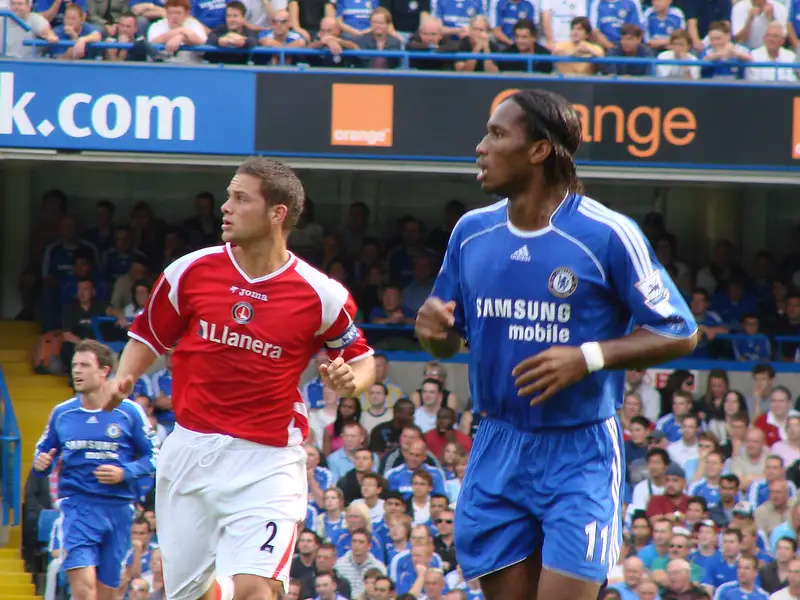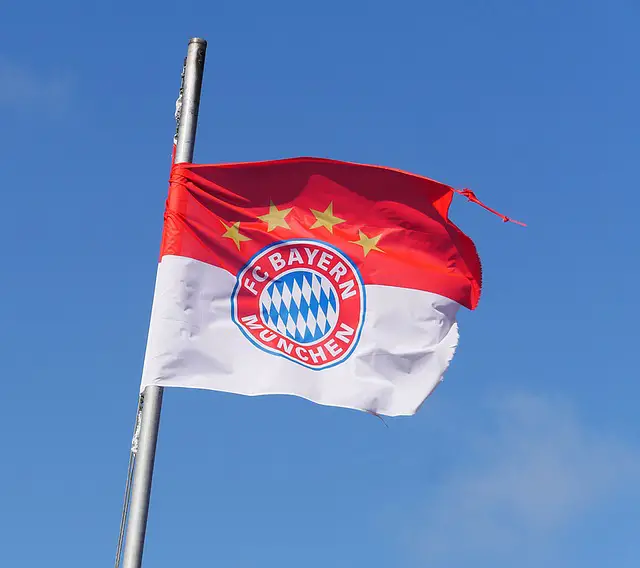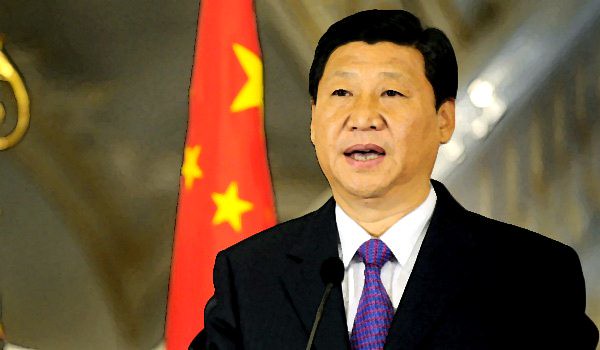The majority of the soccer analysis diminishes on cliché, fashion, and groupthink: we speak with delight on the influence our club’s new manager will possess, frustrated fans, debate that the club must spend a lot of money in the transfer market and commentators lament the effect of huge money and big business on the sport.
However, what if this established wisdom was wrong? These chapters examine the data and proof behind the world’s most famous sport.
With a better insight of the whole thing from the finances of clubs to the association between poverty and talent, you’ll be better fortified to understand and analyze soccer.

1 – Soccer is a small and generally bad business.
Witnesses of modern soccer regularly lament that it’s turning into a big business. Recently instilled with commercial thinking and big money, they think that the game soul has vanished.
However, the fact is, soccer has not been big business, and still it isn’t.
The majority of the people haven’t heard of United Natural Foods, which is a US supplier of organic foods. It’s flourishing, however, isn’t still big enough to be on the S&P 500 –which is the list of the 500 biggest publicly traded US companies. It’s 75 times smaller than Walmart and by all accounts a solid, however typical business. Still, United Natural Foods is a much bigger business than all soccer club on earth.
Between the years 2015-16, Manchester United’s income was €689 million. That’s a good amount; however, it’s still a tenth less than United Natural Foods, and 0.2% of Walmart’s.
The majority of the clubs are the range of a supermarket. It is not a series of a supermarket, but just one supermarket. In 2016, Costco’s warehouse stores sold on average $159 million, while average club incomes for the top 700 division European clubs were below $25 million.
One of the causes of this is that the majority of the soccer clubs are basically not managed like a business.
This is shown by statistical analysis. Szymanski examined the actions of English and Spanish clubs between the years 1993 to 2005 to determine if they were pursuing income or win. Profit needs limiting wages, which entails lesser wins.

It’s an easy trade-off. He discovered that if FC Barcelona needed to maximize its profits, it would have to target the 15th in the league to extremely lessen its wage bill. For clubs such as Athletic Bilbao, their greatest profitable spot would be in the second league – where they would be able to save a great deal on wages. The obvious deduction was that if their aim is profit, then clubs were spending much more than they ought to.
But the good news is that for the majority of the clubs, poor financial management isn’t that necessary, as they are not likely ever to go ruined.
If a club has a problem, it can reduce its wages, experience relegation and still play in a lower division. This is not the usual business way. Ford cannot, in reaction to poor outcomes, dismiss its workforce in favor of unskilled employees making obviously worse cars. Consumers would basically not stand lower products.
It’s correct that soccer has more money than ever before; however, the majority of the fans can take some ease learning that their clubs are being managed with an eye on glory instead of the bottom line.
2 – Managers aren’t that important to a team’s victory.
The cult of the manager is a powerful one – new managerial employment is constantly carried by media and fans alike.
The truth is that the majority of managers make a small difference. As a matter of fact, the majority of them are mediocre. To prove this, don’t look too far than the man who managed one of the utmost achievements in English soccer.
The majority of Claudio Ranieri’s career was mediocre. One Italian soccer writer defined him as “the perfect loser, with a capital L.” He became part of Leicester after he was sacked by Greece after a humiliating loss to the Faroe Islands. Afterward, during his first season with lowly Leicester, they won a totally unpredicted Premier League title. Ranieri didn’t claim recognition for the win, however, a lot of people credited it to him, overlooking his former mediocrity. However, this new embodiment of Ranieri didn’t go on for long: 25 games into the following season, they sacked Ranieri because they only won just five games.
If Ranieri was mediocre for the majority of his job, it appears doubtful that he was the reason for the win in a single season. He isn’t the only one. The majority of the soccer players don’t do well one season just to be a disaster the following. With managers, it’s a common event, suggesting they’re really not important.

But this notion appears to oppose an observable event – the bounce in performance after a new manager is employed. Anytime they fire a manager, performance is likely to improve. In 2009, when Manchester City sacked Mark Hughes, the team won its first four games under the management of the newly employed Roberto Mancini.
According to a Warwick Business School professor’s research on sackings, this bounce is simple to clarify. It discovered that a standard club wins 1.3 points every match, but a club normally sacks its manager when its average gets a low point of 1.0 each match. Any type of statistician can explain what occurs from a low point in a series – that performance will “regress to the mean.”
This simply means, after a run of surprising (bad) performances, it’s possible that results will go back to normal levels, regardless of whether anything really changes. In 2009, if Manchester City had remained with Mark Hughes after a specifically bad run of results, they expected that they would have seen improvements in the results, and Hughes – not his substitute Roberto Mancini – could have taken praise for their following success.
Perhaps, then, a manager’s actual effect comes from the transfers they do? However, that’s also not correct. Let’s look at the reason for that.
3 – Money used on buying new players has a small relationship to the total victory and is all too regularly driven by fashion.
During the summer of 2017, soccer clubs from all around the world spent an extraordinary $4.71 billion just on transfers. What if that spending was a waste?
There are plenty of means to waste money in the transfer market.
Superstars are overrated, specifically those who’ve just done well in a big game. Arsenal purchased Danish midfielder John Jensen in 1992, just a month after he scored a wonderful goal in the final of the UEFA European Football Championship against Germany. However, the goal was a one-time. After Jensen left Arsenal his goalscoring record was so wretched – once in four years – that Arsenal fans printed a shirt that had a saying “I was present when John Jensen scored.”
Therefore, what can clubs do to make transfers right? They need to be directed by data, fashion or instinct.

Put age into consideration. Clubs ought to purchase players that are in their early 20s – not really young and not really old. A small number of brilliant teenagers –such as Messi or Ronaldo – become world-class players. But, the majorities do not. The majority of the winners of the best player award at the FIFA U-17 World Cup have vanished without a track. Have you ever heard of Philip Osundo, Nii Lamptey, or Sani Emmanuel? Maybe not. These are players in their late 20s, conversely, have a confirmed track record, however, that essentially only makes them overpriced and overvalued.
Fifa data for 2013 discovered that players between the ages of 20-22 were 18% cheaper than players aged 25-28. When evaluated by the number of goals scored the average striker peaks by 25, which signifies that their early 20s mean the sweet-spot for high-value players.
Clubs are probably going to keep on spending the cash in pursuit of new stars, however, there’s an abundant proof to suggest they should focus on another measure, and not on transfer fees. Let’s examine that.
4 – Spending money on wages, instead of transfers, is a certain approach to success.
If there is just a weak correlation between transfer spending and performance, why is it that the richest clubs regularly win? It is because there is a correlation between money and performance.
Although studies discover no strong correlation between spending on transfers and performance, they discover a very strong correlation between spending on wages and performance.
This was proven by an analysis of England’s top two divisions between the years 2007 to 2016: It revealed that spending on wages contributed to 90% of a team’s success –close to a 100% association between a club’s salary bill and its league rank. For example, Manchester United used 3.4 times the average on wages – the highest wage bill – and got the highest average league spot of 3rd. At the other bottom of the spectrum, MK Dons spent 0.12 times the average, with an average league spot of 43rd. Put the entire teams on a graph and you will see a very neat line – as wages increase, a club’s league position also increase.
What is the reason for that? Increasing a player’s wage won’t make him twice as good.
High wage entices high performers. Real Madrid can have enough money to pay Ronaldo, but Eibar can’t. If you have Ronaldo and other players like him, you’ll win a lot of games.

Usually, players are paid their worth, and if they aren’t, they’ll check another place for a new role with good pay.
Definitely, there are exemptions. What of Leicester? They won the English Premier League with the 15th-highest pay bill. In one season, the association between wages and success is weaker than in the long term, as over a season luck can have a greater impact. Leicester had plenty of luck, winning the league with just a goal difference – meaning, the net number of goals scored – of only 32 (the average for a champion is 53).
Leicester did great, with some exceptional performances; however, they also gained from the entire regular title competitors suffering from poor seasons. The next season, natural order repeated itself. Leicester withdrew and the high wage-spending clubs went back to the top of the table.
Eventually, the wages market is fairly effective: The better a player is, the more money he’ll get. The more you spend on pays, the more successful your team will become.
5 – Soccer clubs are gradually improving at using data to decide player selection and strategies.
When experts talk on soccer matches, they regularly talk about passion, energy, and determination to win a match – statistics, less so.
However, behind the scenes, data has a bigger and bigger role in present soccer.
The first efforts to gather data were done by Charles Reep a retired British accountant in the 1950s. Upset while watching a specifically bad match, he began writing notes on probabilities made and goals scored. Tactlessly, Reep’s analysis – he established that passing was dangerous and wasteful – was poor. However, his manner of recording matches is still present to this day.
Things have changed since the time of writing notes during a match. In 2011, Chelsea’s director of soccer operations stated they have about 32 million points of data comprising more than 12,000 games. Arsenal, who really purchased a data analytics company named StatDNA – even evaluate a players’ tiredness during matches, based on how long his foot remains on the ground while he is running.
This change in data is progressively assisting clubs to make decisions.

Sam Allardyce, regularly seen as a little of an old-fashioned manager, was something of a creator in using data in English soccer. During the early 2000s, he was the manager of Bolton Wanderers, he made use of data to guide strategies and discover that it led to a simple source of goals: set bits like corners, free-kicks, and throw-ins. Bolton would check defenders’ clearances, discover where the ball regularly reached, fix a player there to take it and, hopefully, score. Bolton scored between 45-50% of their goals in this manner, compared to the league average of one-third.
The entire teams now possess data analysts. The key struggle is making sure that it’s applied.
Data displays that players still regularly shoot at goal from outside the penalty area, no hesitation dreaming of glory. However, Premier League data displays that a bit 2% of these shots score. As data is used more and more carefully, we might assume these interesting, however, regularly futile efforts on goal to die out as the game changes.
6 – There are strong relations between politics, business and the victory of soccer clubs.
Why is it that cities such as Nottingham and Dortmund have won European Cups, whereas great capitals like London, Paris, Rome, and Moscow never won until London’s Chelsea eventually managed it in 2012? It is because there are some important relations between cities, politics, industry, and soccer.
During the 1950s and 1960s were times of totalitarian soccer.
Eight of the first-ever eleven European Cups were won by the preferred clubs of either the Spanish or Portuguese Dictators – Real Madrid for Franco, Benfica for Salazar. In totalitarian times– this also applied to Yugoslavia and East Germany – clubs from the capitals had a tendency to lead. Why is this so?
Dictators usually invest resources in the capital as the focus of power. Occasionally they even assist the club directly: Erich Mielke was the club president of Dynamo Berlin was and his day job was to head up the Stasi which is the feared East German security police. Mielke cherished Dynamo. Referees were aware of this, and Dynamo had a funny routine of having penalties in the 95th minute.
However, after the 1960s, the power of the fascist-backed teams from capitals started to decrease. In 1970 Salazar died, and Franco died in 1975.
From that point, the European Cup was controlled by provincial, industrial, western cities, and not capitals.
Why is the reason for that? Think of Manchester. During 1800, it was really irrelevant that it wasn’t even represented in Parliament. The industrial revolution transformed the whole thing, and during 1900, the newly industrial Manchester was the sixth-largest city in Europe. The majority of the new locals were migrants, and, in search of something to be a part of, discovered soccer. Supporting the local club assisted them to fit in, therefore, clubs became of importance more and grew bigger.

Provincial and industrial cities like Manchester, Barcelona, Turin, Munich, Dortmund, Porto and Eindhoven won 41 out of 55 European Cups between the years 1963 to 2017. These cities all have the same industrial histories, while upper-class cities like Oxford, York, Cambridge or Canterbury have hardly any soccer presence at all.
Currently, the great capitals are growing. London possesses Chelsea. Paris Saint-Germain is developing. Both the ultra-rich people who love to acquire and invest in clubs and international superstar owners have a tendency to approach these open, receiving capitals (Real Madrid, who built its strength under Franco, has continuously been an omission to this trend). The best provincial teams, such as Barcelona and Bayern Munich –are still at or close to the top of European soccer. However, being capital is no more the weakness that it used to be.
7 – Poor nations are poor at sports; however, the same doesn’t essentially relate to poor players.
From Didier Drogba to Diego Maradona, the roots of a lot of soccer stars are poor. Is there a relationship between poverty off the field and riches on it?
The evidence display that rich nations are considerably better at sports than poorer nations.
A good example is Iceland. This land of volcanoes, fishing, and with only 330,000 people turn out to be the smallest nation to ever qualify for either a European or World Cup – a vast overachievement for such a small nation. What’s the secret behind? Investment. During 2000, Iceland began constructing one of the best all-weather sports infrastructures in the world.
More than 100 schools got playing fields, and seven heated indoor facilities with full-size soccer fields were made. This, recall, in a nation with the people of a little city. Children are not only motivated to play, however, vigorously taught by qualified, paid coaches. Years after, this investment was worth it.
Wealth might assist nations; however, what of individual players? Does money assist them? Not entirely. A lot of the greatest European players –like Rooney, Zidane, Ronaldo, Ibrahimovic –hailed from poor areas in Europe. And there’s an easy cause for that: they had enough time to practice.

Famous thinker Malcolm Gladwell’s “10,000-hour rule” mentions that in order to attain a world-class ability in any field like composing, fiction writing, ice-skating or soccer – you need to practice for a minimum 10,000 hours.
In soccer, poor European children are likely to get to those hours. They live in overcrowded places, therefore, they spend time outside with friends in similar conditions. Maybe their parents are not really forceful about them doing their assignments. They have small money to spend on vacation; however, they can frequently find a ball. In brief, their type of upbringing gave them the time to become the best soccer players.
However, – and this is essential – while poor from a European viewpoint, these boys were comfortable. They had a proper diet and access to medical care. Different from a lot of their African or Latin American counterparts, they grew up strong.
Soccer was a life-changer for these players. In the following chapter, we’ll look at how the sport doesn’t only transform lives but also save them.
8 – Soccer protects lives by bonding people together.
The notion that people jump off buildings when their teams lose is a popular one, and there are instances where that occurred.
However, while working with a team of Greek researchers, the authors discovered proof that these anecdotes oppose the reality – that soccer decreases suicides by the thousands.
A study of data on suicide rates in 12 European countries revealed a statistically significant fall in suicides when a nation’s team is playing in World or European Cups.
Let’s consider Germany, where, according to data, between the years 1991 and 1997, 90,000 people committed suicide. However, in the months when Germany was in the main tournament which is June 1992, 1994 and 1996 – 30 lesser men and 14 fewer women committed suicide than in a non-tournament year. This trend is seen in ten out of the 12 nations that were studied.
Definitely, this would be worthless if suicides then increased after a tournament. However, again, in ten out of twelve nations, suicides reduced for the whole year. Why is this so?
Soccer connects people with one another in a common experience, and that appears to save lives.

Winning or losing is not significant. Even though a country loses, it connects. A lot of people watch the match. Some people even shed tears in public. Other people meet in the office the following morning to talk about the loss. Maybe less positively, a few see a scapegoat to target.
Cases from outside soccer appear to validate this effect. In 1963, after John F. Kennedy was killed, the United States was in mourning. However, in mourning together, the week that followed his death there was not a single suicide that was seen in 29 cities that were studied. Also, in 1997 after Princess Diana died, suicides in Britain reduced.
In Europe and Latin America, there is possibly not a thing that forms a mutual social experience like the main tournament that your nation is competing in, irrespective of whether or not they’re successful. And as we’ll find out in the next chapter, that’s good news for England fans.
9 – England is defeated at soccer because it’s more isolated than its actual opponents.
The country that created the game has not been able to win anything since the 1966 World Cup. Why doesn’t England win?
After being unable to qualify for Euro 2008, Steven Gerrard the England midfielder stated that the majority of foreign players competing in England were intimidating homegrown talent. Although, that is probably really wrong.
In England, there are plenty of foreigners playing there. English players contributed to only 37% of all minutes played during the 2007-08 Premier League – that’s about 70 Englishmen playing every weekend, and approximately 120 foreign players. However, as a matter of fact, that’s an advantage to English players.
70 English players are playing in one of the hardest, most competitive leagues on earth each weekend. Ghanaian, Croatian, or also Portuguese supporters fantasize of having a lot of players in a league like the Premier League. The 70 English players must play with the world’s best talent in order to become part of the team and definitely learned a few things from their international teammates and contenders.

Data supports this. Prior to 1995, when rule changes permitted extra foreign players in, the England national team had a success rate – calculating a draw as half a win – of 52%. Between 1998 to 2016, that increase to 57%.
A more likely cause for England’s struggles is the theory of home benefit.
Teams that play at their home have a higher chance of winning – 61.9% of the time, was a matter of fact– in international European soccer matches.
In a match, just the host nation is at home. However, not everybody is severely affected by being away. A lot of players – like those foreigners playing in England – are familiar with it; however, British players hardly relocate abroad. According to a transfer study that was conducted in 2011-13 by FIFA, players who were from Britain – with the exclusion of Myanmar or Nepal – less likely to migrate abroad than any other country in the world.
With this being said, the truth is that England isn’t really that bad. They hold a win percentage, from 2000-14, of 0.671, only after Portugal at 0.682 and before of Italy on 0.653. A possible deciding influence in the big tournaments has, likely, been bad luck.
10 – Western European countries lead soccer since they have the best connection.
For the past three World Cup’s, the teams that were first, second and third all came from Western Europe, with the single exception of Argentina in 2014.
What is the reason why Western European teams are leading? One essential cause is how connected Western Europe is.
A tourist to the 2006 World Cup in Germany could fly to any 20 nations– comprising a sum of 300 million people– in just less than two and a half hours. That’s an extremely dense connection. Think of the difference between Japan and South Korea, the host countries in 2002. Away from each other, no important soccer country is close.
This connection influence has permitted the easy transfer of knowledge and fast development.
In 2014, after winning the World Cup, national coach Joachim Löw described how the Germans renovated after a hard time in the 2000s: they learned how to make passes better from the Spanish and Dutch and enhanced the pace of their play by watching the Premier League.

Bayern Munich which is Germany’s top club had employed Louis van Gaal – then the top Dutch soccer thinker – before substituting him with Spain’s leading thinker, Pep Guardiola. Guardiola stated that “Ideas is for everyone and I have stolen a lot that I could.” And there is no place in the world are there a lot of ideas to steal than in Western Europe. Therefore, where has this connection left European soccer strategies?
Currently, all the leading European nations play a match where there are no specialist players. In its place, all the player on the team looks like a passing midfielder. Germany used the Dutch and Spanish passing game and developed it. For instance, in the 2014 World Cup, Germany accomplished the best passes of any team since 1966. Manuel Neuer who was their goalkeeper finished two more passes than Argentina forward Lionel Messi.
Presently, Europe leads in soccer. However, what does the future have for the sport?
11 – The future of soccer will see it develop into a really international sport.
Two Englishmen went to the remote Scottish island of South Uist during the 1890s. They took a soccer ball with them. In 20 years, Shinty which is a traditional sport played on the island for about 1,400 years – was canceled. Soccer dominated South Uist as it had with peoples across the globe.
In the nineteenth century, the traveling British introduced soccer to Europe, Africa, and Latin America, however, it’s just in the last twenty years that soccer became a really international game.
For the first time in history, 2009 saw the Champions League final become the world’s most-watched sporting event. About 109 million people viewed it which is more than the Super Bowl’s 106 million.
However, soccer still has a lot of chances to mature. It’s just started its increase in the world’s biggest countries: China, India, and Indonesia, however, it is rapidly taking off. As the people in these developing countries become richer, so will the potential group of supporters. What does this worldwide development signify for the quality of the sport?
It is doubtful that Western Europe can maintain its control. As they invest in the sport, non-traditional soccer countries are possible to catch up with them.

Let’s look at China. Presently, China has 1.3 billion population; however actually not enough decent soccer players. It is in the 70th in the world rankings, only after tiny Cape Verde. But, China has a soccer fan as a president, Xi Jinping and a lot of money to invest.
The Chinese children are not usually permitted to take time off school and chores to play sport. If you walk around the streets of Beijing and kickabouts are not a popular view. However, government policies could make changes to that. About $220 billion is being invested in the sport, and soccer is now compulsory in schools. Artificial fields are being made, and foreign coaches are being employed to teach 50,000 soccer teachers. Xi has established a formal objective for China to host and win the soccer World Cup by 2050.
Definitely, it’s not only China. Nations such as Japan, the US, and Iraq as well have a growing soccer tradition. The future World Cup finals could be really different.
Soccernomics by Simon Kuper, Stefan Szymanski Book Review
A lot of our discussion about soccer is founded on false evidence and traditional beliefs: “Soccer is only big business in these present days,” “My club badly requires a new manager,” or ‘Players from poor families are hungrier for victory.” A calm, obvious, rational analysis of data displays to us that there’s a different, better method to play, manage, understand and love the world’s most general sport.
Follow the data trends.
Statistics provide a precise guide on who is more likely to be victorious in certain circumstances. One such case is the penalty shootout. The team that shoots first has an important edge and wins on average 60% of the entire penalty shootouts. This is perhaps the reason that there’s greater pressure on the second team, who need to score to save the match. Therefore, irrespective of whether you’re betting or only enjoying the excitement of the event, look for the coin toss and see which team goes first– six times out of ten, then that’s your winner.
